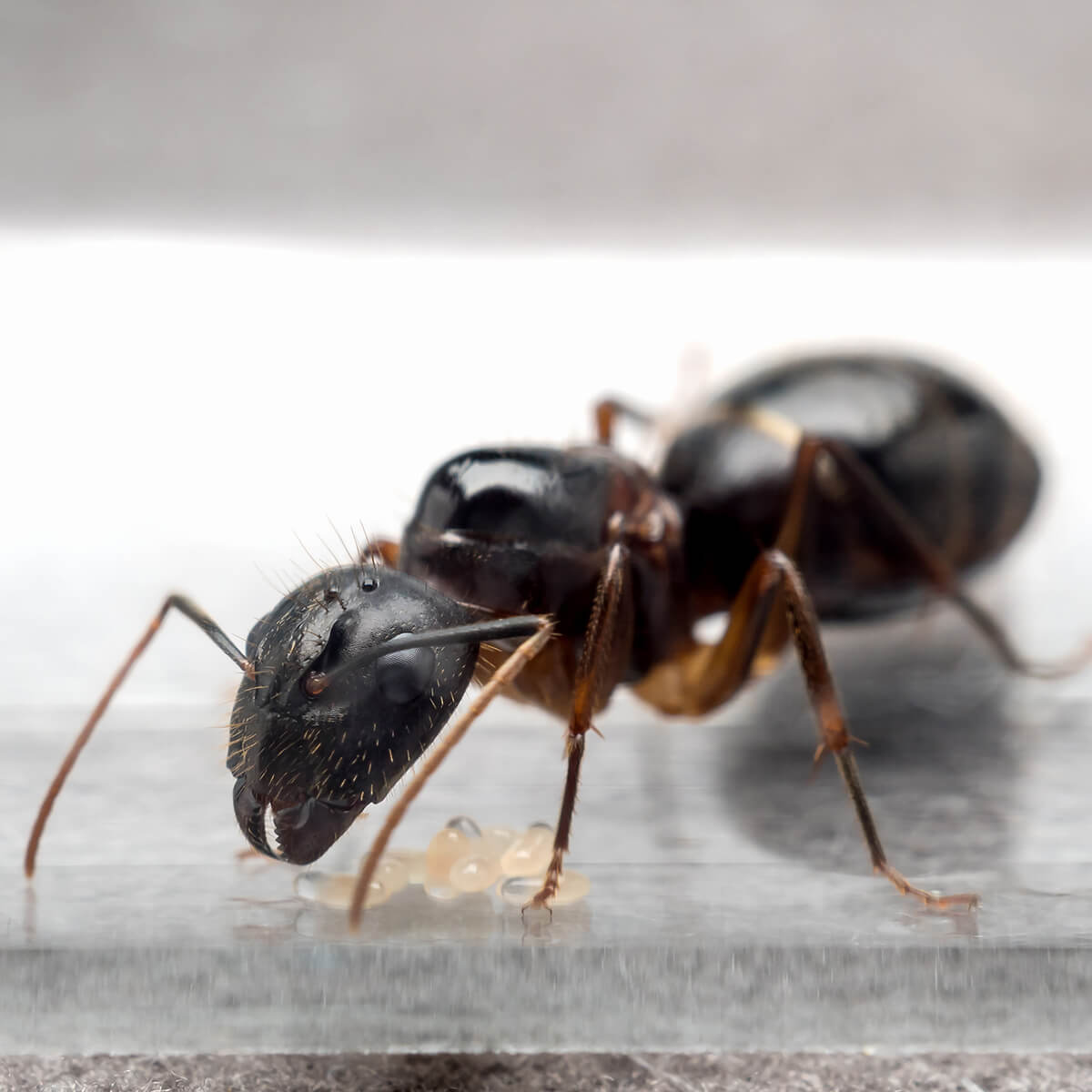Carpenter Ant
Dealing with carpenter ants is no picnic, but this specific species is actually quite interesting. They like to nest in wood just like termites, but they do not need it for food, despite common beliefs. More about these ants' habits and way of life, you can find in here.
Carpenter ants characteristics

- Scientific name: Camponotus spp
- Colour: Dark, usually brown, orange or black
- Legs: 6
- Body: Polymorphic, as carpenter ants differ in size
- Size: Normally 3 - 12 mm
- Antennae: 2 antennae, which are slightly bent on top ;
- Bites or stings: No sting but they have a painful bite
- Danger: Carpenter ants can be dangerous for your property as they like to settle in wood and build tunnels, which weakens its structure.
- Region: Australia
Carpenter ants’ life cycle
After mating, only the queens survive and their search for the perfect nesting place begins. Once they find it and settle down, they lay approximately 20 eggs, which need about 60 days to transform into adults.
These ants reside in two kinds of nests - one main nest and several secondary nests. The first one is saved for just the queen and her eggs, along with the newly born larvae and workers. The latter help look after the new offspring. The rest of the carpenter ants’ nests are inhabited by the bigger larvae and winged ants.
Carpenter ant's facts
- As usual, the queen plays a central role in the colony. She is known to spread powerful pheromones, which influence the workers in any way necessary. Pheromones also help the ants to recognise others from the colony.
- For their main nests, carpenter ant species usually favour areas that are rich in moisture. As for the rest, they can be situated pretty much anywhere.
- This type of ants has no problem nesting outdoors in gardens, as well as indoors, as long as it discovers a favourable place.
Carpenter ants’ habits
- The carpenter ants in Australia are fond of trees and wooden structures. The most common places to look for infestation is around the windows, roof and other areas that are prone to moisture. If not taken care of, the intruders can cause a lot of troubles for you and your home.
- Despite their name, these ants do not actually eat wood. Instead, they prefer honeydew provided by aphids or just dead insects.
- Don’t count on catching those little crawling insects during the day. They are most active after sunset. So if you have doubts that there is a carpenter ants infestation somewhere in the house, we suggest you try and investigate at night.
Signs of a carpenter ants’ infestation
- Of course, the biggest clue you can have is seeing black ants in or outside your property. Now that you are aware of their appearance and habits, you can easily identify them and take the necessary measures.
- Finding small particles of wood or sawdust could be another clear sign. It is a result of the insects roaming through the wood, building tunnels.
- Try to hear them. Carpenter ants may be quite small but they can still make a strong enough sound for you to detect. However, you need to be very quiet and close to the area where they are nesting.